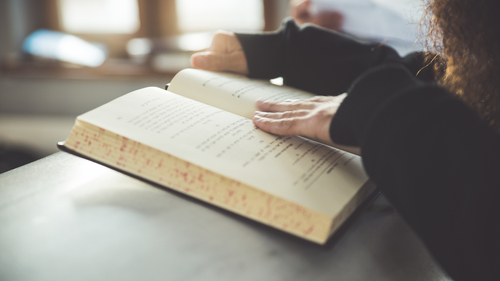
For followers of Judaism, honoring the spirit and memory of the deceased is paramount. In addition to planning a Jewish memorial and purchasing a Jewish monument, Jewish people also celebrate the Yahrzeit. Reciting the Kaddish, which is a prayer for the deceased, is another important Jewish burial tradition. Read on to learn more about the significance of the Kaddish prayer in modern-day Judaism.
What is the Kaddish Prayer?
The Kaddish prayer is one of the most important within the entire scope of Judaism. In fact, the Kaddish prayer is equally (if not more) important as the Jewish monument unveiling ceremony. The Kaddish prayer is a way for Jewish people to offer praise to God, and thank Him for all of life’s experiences. In doing so, this prayer also expresses and articulates the value of life, presenting God as a peaceful and benevolent ruler of the Earth.
While the Kaddish is always a significant prayer during service, it carries additional significance during times of grief. According to Jewish tradition, each member of the Jewish faith has a certain sense of Godliness. After an individual passes, this radiance or presence becomes slightly diminished. Reciting the Kaddish restores the presence of God within the world, in an homage to the memory of the deceased.
In order to recite the Kaddish, 13 Jewish men must make a quorum. This is because there are several responses that benefit from group participation. The Jewish monument unveiling ceremony requires the same quorum, when the rabbi reads the Kaddish.
The Mourner’s Kaddish
The Mourner’s Kaddish is a slight variant of the traditional Kaddish prayer that one recites during Jewish services. While the standard Kaddish prayer requires a quorum, the Mourner’s Kaddish is to be an individual activity.
Like other stages of mourning, the Mourner’s Kaddish is to help the family of the deceased come to terms with their passing. The Mourner’s Kaddish does not allude to the deceased individual, or even the concept of death. Instead, it is a celebration of life, and all that God has to offer.
After a parent passes, the son says the Kaddish for 11 months. In doing so, he will demonstrate to God the importance of spirituality, and that his parents raised a faithful child. Additionally, it is great praise for a child to be so devoted in prayer to the welfare of his family. This period ends with the Yahrzeit, when the family unveils the Jewish monument.
Jews should also recite the Kaddish for other family members. After the passing of a child, sibling or spouse, Jews should recite the Kaddish for 30 days.
The Kaddish also encourages a community environment. This has many psychological benefits, especially for mourners.
In some cases, there is not a son that is able to carry these important duties out. Customarily, the family may ask another relative to pray in the stead of a son. When this is not possible, they may hire somebody to say the Mourner’s Kaddish.
Aside from especially traditional sects of Judaism (such as Orthodox Jews), women are permitted to recite the Kaddish.
Reciting the Kaddish on the Yahrzeit
The Yahrzeit is another important opportunity to honor the deceased members of the family. It occurs each year following the death of a relative, and gives the family the opportunity to thank the deceased for positive memories.
What is the Origin of the Kaddish Prayer?
Originally written in Aramaic, a language related to Hebrew, the writers of the Kaddish prayer intended for the masses to understand the Kaddish prayer. In fact, it’s origin dates back as far as the Talmud. Formerly, Jews called it the Orphan’s Kaddish, reserving it for children to pray for parents.
Long Island Jewish Monuments
At Fox Monuments, we are dedicated to crafting beautiful and meaningful Jewish monuments for our Long Island customers. Utilizing Jewish headstone symbols, all of our monuments are created to serve as a lasting testament to an individual’s life. Contact us to learn more about our Jewish monuments.